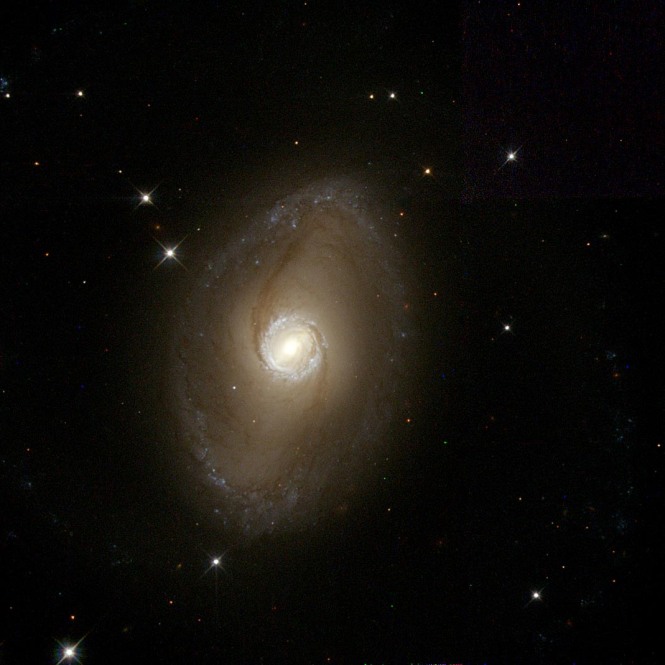Visit the gallery of my previous images at this link.

![]()
NGC 6782
How a galaxy appears depends on the color of the light viewed. This image used wavelengths of ultraviolet and visible light. The visible light from this spiral galaxy shows a tightly wound pinwheel shape. That is typical of many spirals.
Viewed in ultraviolet light, the shape can be very different. Ultraviolet light is a shorter wavelength than visible light. It is emitted by stars much hotter than the Sun. They are seen as blue in this image of NGC 6782. The central and outer rings have a lot of these hot stars. Darker lanes of cooler dust can also be seen. Click any image to embiggen.
![]()
NGC 7318
Known as Stephan’s Quintet, this tight gravitationally bound group was discovered in 1877 by Édouard Stephan. The Hubble greyscale images I used to form this color image show only four of the five members of the quintet. It is one of the most studied galaxy groups.
As noted above, young hot stars show as blue. Older and more mature stars are tinted red in this image giving the glow we see. There is a great deal of activity taking place in this group.
![]()
NGC 7635
The Bubble Nebula was first observed in 1787 by William Herschel. It is found in the constellation Cassiopeia at a distance of 7100 light years. The star at lower left center, visible through the shell of gas, is 40 times the mass of our Sun. It is driving the expansion of the gases of the shell at 2000 km/s from it. Intense ultraviolet light is illuminating gases nearby to the right and in the more distant upper left. Light travels much faster than the expanding nebular shell of gas.




I see a galaxy full of bubbly love…
Amazing pictures! What travels faster than light?
Nothing…it’s the speed limit. 🙂
Ha-ha. Yeah, that’s what I seem to remember, Jim. And thank goodness for that, too! 😉
I saw the original one of the Bubble Nebula, and yours goes a step further in adding and enhancing the qualities it has, making it easier to understand in physical and astronomical terms. I wonder if the yellowish-green is also related to age, or simply colored gas. Very original!
Thank you. Each color is indicative of a type of element. When excited by energetic sources, like the ultraviolet radiating star, the gas gives off a characteristic set of colors. That is how we can ID them. Like fingerprints.
Can we identify gases by their colors, or not necessarily? For example, what if a white gas which could be x, could be absorbing the color of another?
Good question. We can ID gases by the colors of the line spectra they emit as well as the colors they absorb.
http://en.wikipedia.org/wiki/Absorption_spectroscopy#Absorption_spectrum
I simply love deep space pics. Of these, the last one is my fav … and a possible future header.
It could be arranged.
Oh my gosh. These are gorgeous images. The first reminds me of bacteria budding off. I love coming over to your blog to learn something new.
Thanks, Debra. Comments like that make a person keep trying. 🙂
In the picture of NGC 6782, I like the darker spirals you mentioned. They contrast nicely with the medium shades around them and the conspicuous bright part at the center.